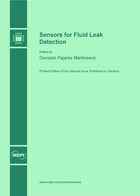Sensors for Fluid Leak Detection
A special issue of Sensors (ISSN 1424-8220). This special issue belongs to the section "Physical Sensors".
Deadline for manuscript submissions: closed (15 March 2014) | Viewed by 118530
Special Issue Editor
Interests: computer vision; image processing; pattern recognition; 3D image reconstruction, spatio-temporal image change detection and tracking; fusion and registering from imaging sensors; superresolution from low-resolution image sensors
Special Issues, Collections and Topics in MDPI journals
Special Issue Information
Dear Colleagues,
Fluid leak detection is a very old problem, gas or water leaks in aerial pipes or underground pipelines are typical examples. Detection of other fluid leaks has attracted less. This is the case of early oil detection, particularly in underwater sea-lines or other chemical products.
Growing technological development of sensors, for fluid leaks detection, has greater chances of success particularly in early stages. Sometimes, sensors must be installed on multisensory platforms where leak detection is a problem but also the positioning and platform navigation. This is the case of underwater or ground vehicles exploring sea-lines or industrial plants.
This special issue is devoted to sensors devices, materials, technologies and tools for fluid leak detection in different environments such as underwater sea-lines, spillage on the sea surface or ground and aerial pipelines in buildings or industrial plants. Physical and chemical sensors or biosensors are to be considered.
These sensors could also be used as an aid for other purposes such as navigation or positioning of autonomous or remotely operated vehicles (underwater, surface, ground) under the leak detection context.Prof. Dr. Gonzalo Pajares Martinsanz
Guest Editor
Manuscript Submission Information
Manuscripts should be submitted online at www.mdpi.com by registering and logging in to this website. Once you are registered, click here to go to the submission form. Manuscripts can be submitted until the deadline. All submissions that pass pre-check are peer-reviewed. Accepted papers will be published continuously in the journal (as soon as accepted) and will be listed together on the special issue website. Research articles, review articles as well as short communications are invited. For planned papers, a title and short abstract (about 100 words) can be sent to the Editorial Office for announcement on this website.
Submitted manuscripts should not have been published previously, nor be under consideration for publication elsewhere (except conference proceedings papers). All manuscripts are thoroughly refereed through a single-blind peer-review process. A guide for authors and other relevant information for submission of manuscripts is available on the Instructions for Authors page. Sensors is an international peer-reviewed open access semimonthly journal published by MDPI.
Please visit the Instructions for Authors page before submitting a manuscript. The Article Processing Charge (APC) for publication in this open access journal is 2600 CHF (Swiss Francs). Submitted papers should be well formatted and use good English. Authors may use MDPI's English editing service prior to publication or during author revisions.







